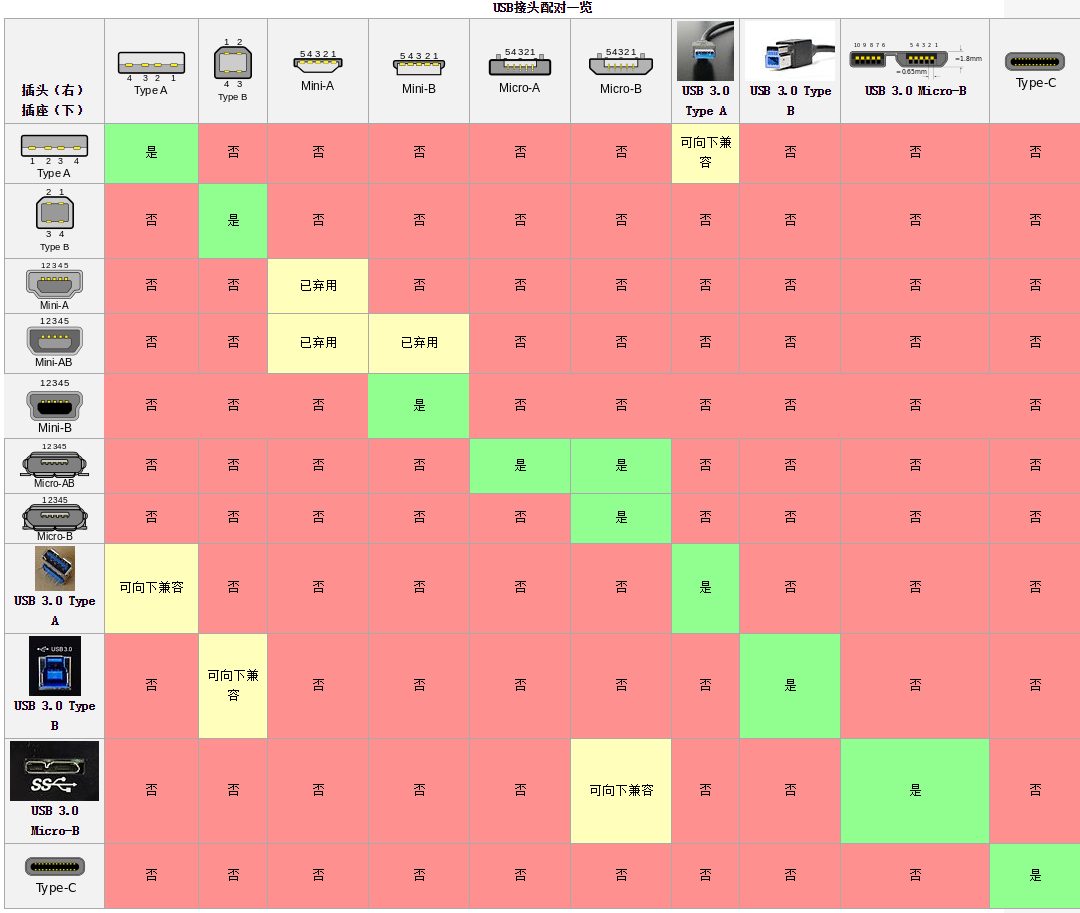USB: Universal Serial Bus
This article introduces the hardware interface Universal Serial Bus (USB).
Overview
USB, short for Universal Serial Bus, is an industry standard developed in the mid-1990s that defines the cables, connectors and communications protocols used in a bus for connection, communication, and power supply between computers and electronic devices. It is currently developed by the USB Implementers Forum (USB IF).
USB was designed to standardize the connection of computer peripherals (including keyboards, pointing devices, digital cameras, printers, portable media players, disk drives and network adapters) to personal computers, both to communicate and to supply electric power. It has become commonplace on other devices, such as smartphones, PDAs and video game consoles. USB has effectively replaced a variety of earlier interfaces, such as parallel ports, as well as separate power chargers for portable devices.
USB Specifications
| Release | Release Date | Maximum Transfer Rate | Note |
|---|---|---|---|
| USB 0.8 | Dec 1994 | Prerelease | |
| USB 0.9 | Apr 1995 | Prerelease | |
| USB 0.99 | Aug 1995 | Prerelease | |
| USB 1.0 Release Candidate | Nov 1995 | Prerelease | |
| USB 1.0 | Jan 1996 | Low Speed (1.5 Mbit/s) Full Speed (12 Mbit/s) |
|
| USB 1.1 | Aug 1998 | ||
| USB 2.0 | Apr 2000 | High Speed (480 Mbit/s) | |
| USB 3.0 | Nov 2008 | SuperSpeed (5 Gbit/s) | Also referred to as USB 3.1 Gen 1 by USB 3.1 standard |
| USB 3.1 | Jul 2013 | SuperSpeed+ (10 Gbit/s) | Also referred to as USB 3.1 Gen 2 by USB 3.1 standard |
Formats of USB Connectors
- standard format intended for desktop or portable equipment
- mini format intended for mobile equipment
- micro format intended for low-profile mobile equipment

System Design
The design architecture of USB is asymmetrical in its topology, consisting of a host, a multitude of downstream USB ports, and multiple peripheral devices connected in a tiered-star topology. Additional USB hubs may be included in the tiers, allowing branching into a tree structure with up to five tier levels. A USB host may implement multiple host controllers and each host controller may provide one or more USB ports. Up to 127 devices, including hub devices if present, may be connected to a single host controller. USB devices are linked in series through hubs. One hub — built into the host controller — is the root hub.
A physical USB device may consist of several logical sub-devices that are referred to as device functions. A single device may provide several functions, for example, a webcam (video device function) with a built-in microphone (audio device function). This kind of device is called a composite device. An alternative to this is compound device, in which the host assigns each logical device a distinctive address and all logical devices connect to a built-in hub that connects to the physical USB cable.
Getting a Vendor ID
If you are a new USB product developer looking to get a vendor ID for your company, refer to Getting a Vendor ID.